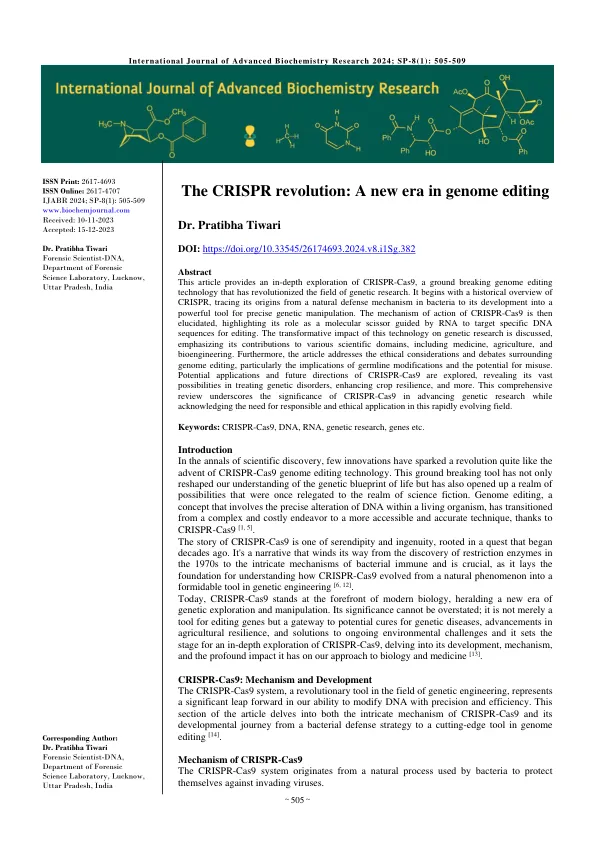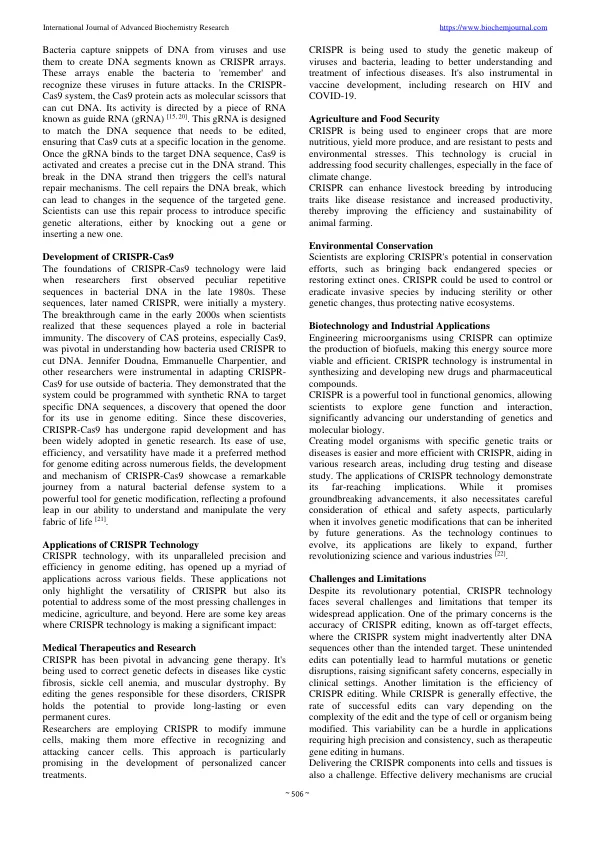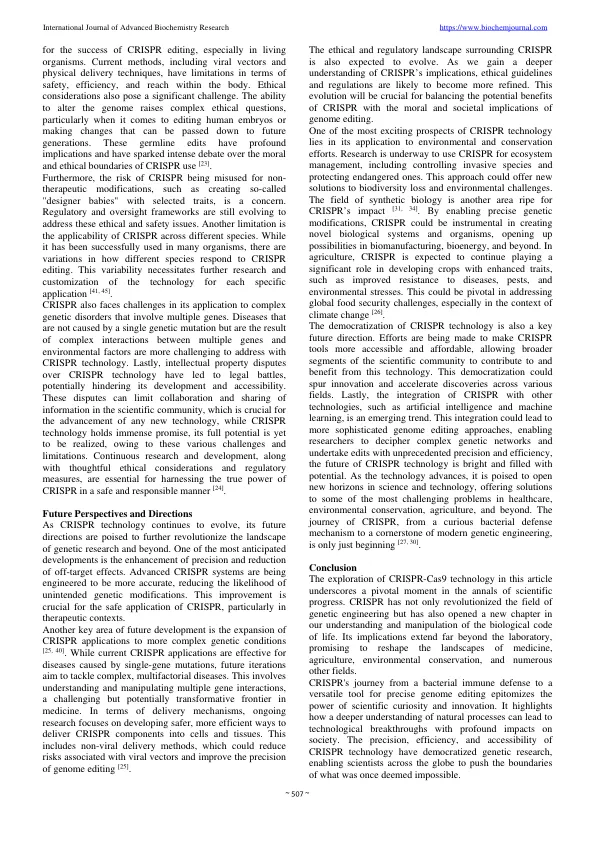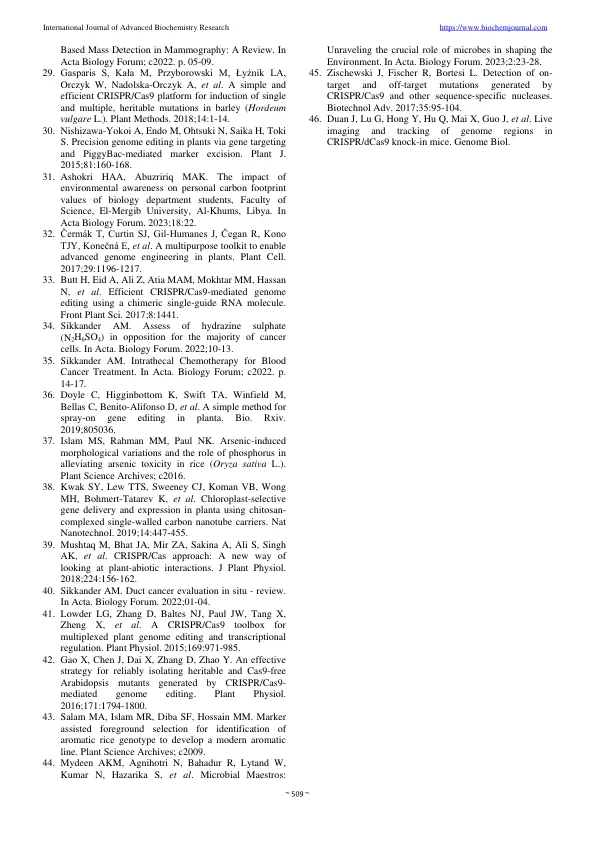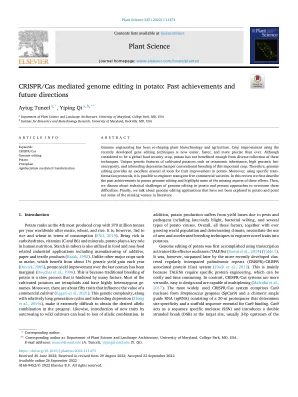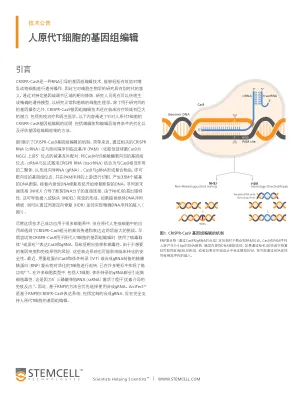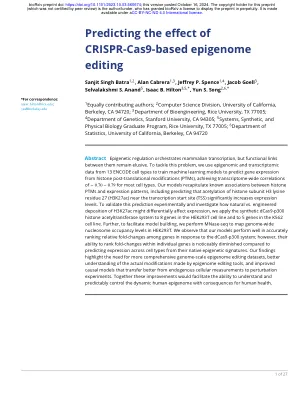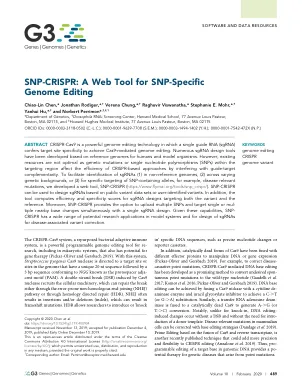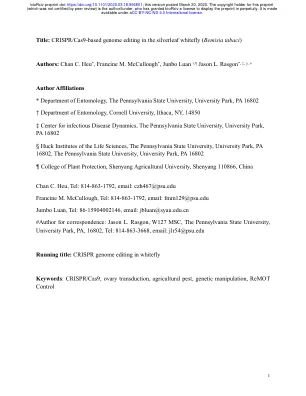Dr. Pratibha Tiwari DOI: https://doi.org/10.33545/26174693.2024.v8.i1Sg.382 Abstract This article provides an in-depth exploration of CRISPR-Cas9, a ground breaking genome editing technology that has revolutionized the field of genetic research. It begins with a historical overview of CRISPR, tracing its origins from a natural defense mechanism in bacteria to its development into a powerful tool for precise genetic manipulation. The mechanism of action of CRISPR-Cas9 is then elucidated, highlighting its role as a molecular scissor guided by RNA to target specific DNA sequences for editing. The transformative impact of this technology on genetic research is discussed, emphasizing its contributions to various scientific domains, including medicine, agriculture, and bioengineering. Furthermore, the article addresses the ethical considerations and debates surrounding genome editing, particularly the implications of germline modifications and the potential for misuse. Potential applications and future directions of CRISPR-Cas9 are explored, revealing its vast possibilities in treating genetic disorders, enhancing crop resilience, and more. This comprehensive review underscores the significance of CRISPR-Cas9 in advancing genetic research while acknowledging the need for responsible and ethical application in this rapidly evolving field. Keywords: CRISPR-Cas9, DNA, RNA, genetic research, genes etc. Introduction In the annals of scientific discovery, few innovations have sparked a revolution quite like the advent of CRISPR-Cas9 genome editing technology. This ground breaking tool has not only reshaped our understanding of the genetic blueprint of life but has also opened up a realm of possibilities that were once relegated to the realm of science fiction. Genome editing, a concept that involves the precise alteration of DNA within a living organism, has transitioned from a complex and costly endeavor to a more accessible and accurate technique, thanks to CRISPR-Cas9 [1, 5] . The story of CRISPR-Cas9 is one of serendipity and ingenuity, rooted in a quest that began decades ago. It's a narrative that winds its way from the discovery of restriction enzymes in the 1970s to the intricate mechanisms of bacterial immune and is crucial, as it lays the foundation for understanding how CRISPR-Cas9 evolved from a natural phenomenon into a formidable tool in genetic engineering [6, 12] . Today, CRISPR-Cas9 stands at the forefront of modern biology, heralding a new era of genetic exploration and manipulation. Its significance cannot be overstated; it is not merely a tool for editing genes but a gateway to potential cures for genetic diseases, advancements in agricultural resilience, and solutions to ongoing environmental challenges and it sets the stage for an in-depth exploration of CRISPR-Cas9, delving into its development, mechanism, and the profound impact it has on our approach to biology and medicine [13] . CRISPR-Cas9: Mechanism and Development The CRISPR-Cas9 system, a revolutionary tool in the field of genetic engineering, represents a significant leap forward in our ability to modify DNA with precision and efficiency. This section of the article delves into both the intricate mechanism of CRISPR-Cas9 and its developmental journey from a bacterial defense strategy to a cutting-edge tool in genome editing [14] . Mechanism of CRISPR-Cas9 The CRISPR-Cas9 system originates from a natural process used by bacteria to protect themselves against invading viruses.
CRISPR 革命:基因组编辑的新时代
主要关键词
